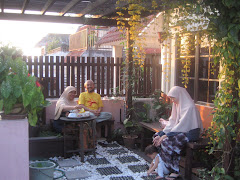Herpes Zoster
A highly contagious viral disease, chickenpox is common but mild in children; it is more severe in adults. Infection is easily spread via airborne droplets that are exhaled or expelled (eg. when coughing or sneezing), causing outbreaks in places where there are close person-to-person contacts. Epidemics are thus common in schools, military camps, dormitories, and crowded areas. A single attack gives a person lifelong immunity. However, the virus may remain dormant in the nerve tissues and reappear later in life as shingles. (See SHINGLES page 478)
Symptoms
- Fever and malaise (headache, backache, sore throat, weakness, etc), runny nose which precedes the rash.
- Rash, which start as small, very itchy red bumps on the upper arms and armpits, behind the ears, and on the torso (chest, abdomen, and back). The bumps turn into fluid-filled blisters and after several days, dry up, crust over, and finally fall off on their own. Duration of illness is about 2 weeks.
- Severe itch.
Complications
- Secondary bacterial infection.
- Pneumonia (lung infection), which is common in adults.
- Encephalitis (inflammation of the brain), in rare cases.
- If a pregnant woman gets infected a few days before delivery, the newborn could get a severe form of the disease.
Cause
- Infection by the Varicella zoster virus. A person is highly infectious about two days before the rash appears and about a week after, or when all blisters have crusted over.
Chickenpox is transmitted via:
- Airborne nose and mouth secretions expelled when an infected person exhales, coughs, or sneezes.
- Direct contact with ruptured blisters.
What you can do
- Take a complete rest until all blisters have dried up. Full recovery comes a week to 10 days after the rash breaks out.
- Do not burst the blisters, scratch, or peel off the scabs to avoid spreading the viral infection, as well as to prevent secondary bacterial infection and scarring. Trim a child's fingernails or put mittens on his hands to keep him from scratching.
- Take antifever medicine for the fever; this will also take care of the aches.
- Consult a doctor if you think you or your child has the symptoms and have not had the disease.
What your doctor can do for you
- Prescribe antiviral tablets for an adults. (Children usually need only rest.) To be effective, however, the treatment must be started very soon after the rash appears (at least within 24-48 hours).
- Prescribe antibiotics, if there is secondary infection.
- Treat the complications.
For products see Skin anti-itch agents & antihistamines page 491
This article is reffered to Malayssia Healthcare Guide-The family health guide, MIMS, 2nd edition, 1997, page 269





No comments:
Post a Comment